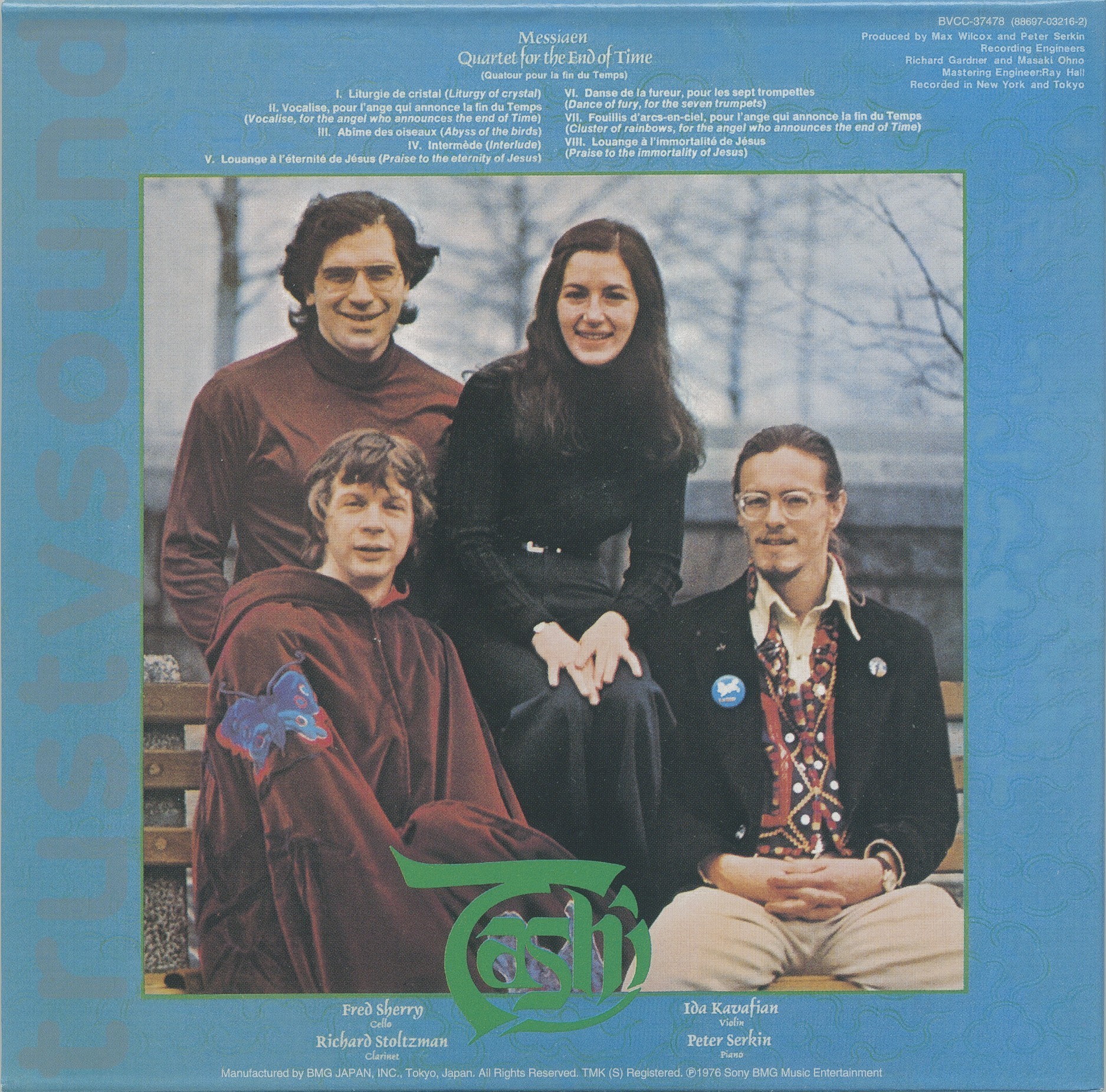I think I cried a little when I had my last lesson with Mr. Thompson, and it's possible that Mr. Thompson's eyes became a bit misty. At any rate, it was a sad and empty and strange time that summer of '56 leaving San Francisco and ending up in a Cincinnati motel with my mom and brother waiting each day for my dad to come back after each day of working at his new job for Eastern Pacific and hunting for an apartment for us. I don't remember taking out my clarinet to play even one note. But within a few days our family settled into Roselawn Village on Joyce Lane across the street from Swifton Village and one block through the parking lot at the mall to Woodward High School, where I entered 9th grade and found the band room. Presiding over the band was Gilbert Curtis, our harried conductor. And I think it was on his advice that I found my next clarinet teacher, William Gasbarro. He held down a job as a band director at Walnut Hills High School and lived with his young family in a Swifton Village apartment so my parents decided it might be possible for me to cross the street and find my new teacher.
Mr. Gasbarro had gone to the Julliard School of Music in New York. Though this credential did not register on my young, naïve mind, I now realize that it was his passion for the clarinet that aligned me on the track to serious work in the technique of playing.
Mr. Gasbarro introduced me to the French school of etudes, using Paul Jean-Jean and Paris Conservatory Etudes. I entered the world of whole tone scales, flowing rhythms, and dynamic range. Placing his nicotine-stained hand (he was an avid smoker) on mine, he tried to teach touch and, ironically, breath conrol. He was the teacher who opened my ears to the gamut of sound dynamics by diagramming: air....pppp<fff>pppp....air.
This magical drawing transformed my physical relationship with the clarinet. For the first time, I sensed a chemical transformation of human breath changing into vibrating bamboo reed, then into the birth of tone and finally reversing and returning to nothingness -- leaving only air.
Mr. Gasbarro made me aware of time and my conservation and control of it. After only a few lessons, he asked me if I had enough time to practice. I'd never thought about it. How did I use my practice time? I'd never thought about it. So he sketched a chart for me, showing each day of the week on a horizontal axis and the hours of each day as a vertical axis. Well, I was just at the right age (14) to take this idea and run with it. I came back to my next lesson with a chart 2x3 feet, minutely ruled out and divided into tiny time slots for each potion of my practice. I think Mr. Gasbarro was somewhat shocked to see how seriously and meticulously I had taken his admonition. I think I only brought this chart detailing every minute I used to practice for perhaps a few weeks before Mr. G. informed me I needn't lug it along anymore. But the impact of seeing the moments of my days with the clarinet writ large has haunted me ever since.
Mr. Gasbarro was appalled by the wooden clarinet I had. I, of course, thought it was pretty keen. My father had been persuaded to part with his hard-earned and small amount of “extra” cash to place a down payment with my junior high school band teacher in San Francisco, Mr. Patenoe, for what I now realize was a real clarinet in name only. All I knew at the time was that I now had a snazzy two-tone fake leather case and could leave my one-piece metal clarinet at home. I was thrilled to have a tiny container of cork grease. I was also initiated into the tiny mysteries of assembling the five sections of the clarinet and preparing my grip on the top and bottom joints of silver rings and keys so that the all-important crucial connection of the bridge key could do its magical job of permitting the right hand to communicate with the left in overlapping finger sequences.
Mr. Gasbarro insisted that I must prepare for state competitions. Though I did not resist I also did not look forward to playing for judges and being compared to others. But I must have been too young and inexperienced to really be nervous. That realm was ruled by Mr. G. Now, in retrospect, I see how the New York training, the nicotine nerves, the pride and the anxiety, worked their way from teacher to pupil. On the day of a contest I was neither nervous nor really prepared. So when my time slot for performance was delayed, I simply went out to get a chocolate milkshake, much to the horror of my dear devoted teacher, who frantically found me sipping as my turn quickly approached. “Didn't I realize drinking a milkshake would mess up my mouth for clarinet tone and articulation?” And I “should be preparing my mind for the imminent competition.”
As luck would have it, this time the judges were kind and Mr. Gasbarro was happy. A footnote to this story -- when I entered the Munich competition a decade later, I was prepared and nervous and was eliminated by the judges immediately. And four decades later, I judged the same competition.
Excerpted from Another Name for God, copyright 2015


